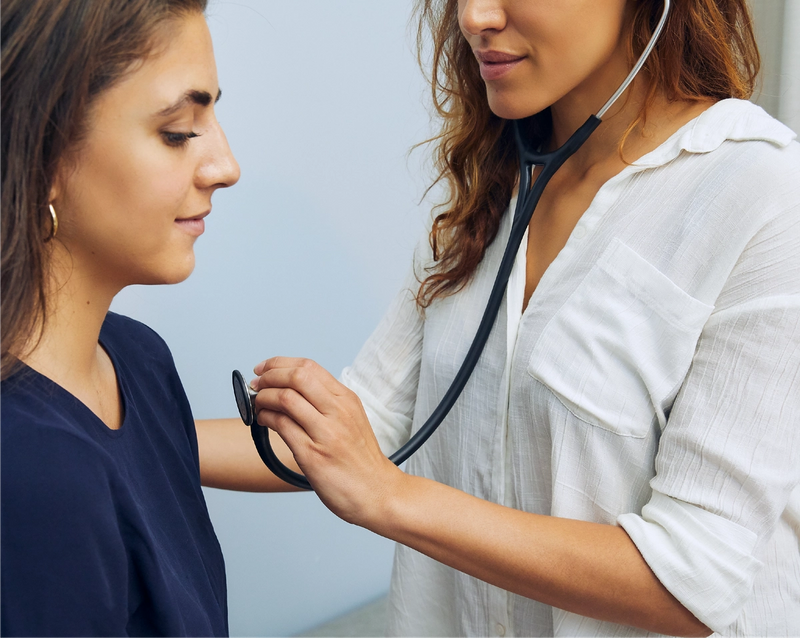Are You At Risk of Developing A Severe Case of COVID-19? Here’s What We Know And What We Don’t

Each day we are learning more about COVID-19, the disease associated with the novel coronavirus. And as more cases of the disease appear in the US, we are also receiving more questions from our members about their risk of contracting the disease and their risk of developing a severe case of the disease.
While the statistics are changing on a daily basis, here’s what we know as of March 13, 2020:
- Children and healthy adults below the age of 50 have very low risk of developing a severe case of the disease and data to date suggest that 80% of infections are mild or asymptomatic (WHO ).
- The risk of mortality is concentrated with very specific groups . Of all cases, it’s estimated that 15% are severe infection, requiring oxygen, and 5% are critical infections, requiring ventilation (WHO ).
What exactly does this mean for you and what comes next?
First, regardless of your risk factors, slowing the spread of the disease is one of the most important steps people can take right now to protect their health and the health of their communities. This concept is called “flattening the curve” and there’s a great article in The New York Times explaining the concept. We encourage you to read it here .
Second, you need to know your health status and the health status of your loved ones. Even a mild case could have a significant impact if the person infects someone else who is more vulnerable to this disease. This means that regardless of your risk profile, you should exercise caution and closely follow the prevention guidelines from the Centers for Disease Control and Prevention (CDC). Here’s how you can better understand your risk profile and the risk profile of your loved ones.
Health risk factors for developing a severe case of COVID-19
Age
While the overall global mortality rate of COVID-19 is currently estimated to be around 3.4% by the WHO (as of March 3), early reports out of China show that case fatality rate increases with age. The case fatality rate of those in their 50s was 1.3%, about three times greater than for those in their 40s. The case fatality rate is highest (14.8%) for those over the age of 80. This age-related pattern has also shown up in Italy, which has seen the highest number of coronavirus deaths outside of China. Children seem to be generally experiencing a milder form of the disease, though more severe complications are seen in children with underlying comorbid conditions. Mainly this is because as we get older, most people have developed at least one chronic health condition that is stressing their immune system . In addition, our T-cell (a part of our adaptive immune system) function decreases which increases our risk of becoming ill.
Pre-existing conditions
Adults with preexisting conditions like heart disease and diabetes or chronic lung conditions such as asthma, emphysema, COPD have a greater risk of being affected by any virus, including COVID-19 because of decreased ability to fight off infections due to a less robust immune response. In China , coronavirus patients with heart disease had a 10 percent case fatality rate, while those with diabetes had around a 7 percent case fatality rate, far greater than the global average — which WHO estimated at 3.4% on March 3rd.
Immunocompromised adults
Immunocompromised means the inability to normally respond to environmental exposures including viruses or bacteria due to a weakened immune system. People who are immunocompromised include those with diabetes, heart disease, hepatitis B, chronic kidney disease, malnutrition, and cancer because those conditions do lessen one’s ability to mount an adequate immune response.
Smoking
Adults who smoke on a regular basis (cigarettes, cigars, marijuana) are at an increased risk for more severe upper respiratory infections overall. And while early studies of the novel coronavirus are not conclusive, experts believe one of the reasons that men in China died more often than women from coronavirus was because of their smoking habits.
If you fall into any of the above categories—or if someone you see often does—you’ll want to take additional precautions to protect yourself and your loved ones. Just one of these things can make someone more susceptible to developing a more severe case of COVID-19, while two or more will compound risk.
How to assess your current risk profile for acquiring the disease
Outside of health-related risk factors, there are also three risk-exposure factors outlined by the CDC to be aware of. Aside from this list, recent travel to a region or community that has strong sustained transmission is also a risk factor, but because the list of affected regions is changing rapidly, we recommend consulting the CDC site directly for the latest information on exposure and geographic risks.
Note: if you have had high- or medium-risk direct contact (as outlined by CDC) with someone who has COVID-19 it is recommended that you self-isolate and practice social distancing for 14 days, even if you have no symptoms.
How to protect your health if you are at higher risk of developing a severe case of COVID-19
If you have health risk factors, consult with your primary care doctor to determine if more specific protective measures need to be taken. This may include re-evaluating how you commute to work, reducing non-essential travel, exercising at home or in nature, and limiting large social gatherings. If there is sustained community transmission in your area it could mean staying home and limiting visitors. If you have exposure risk factors, the CDC recommends you take certain precautions to protect yourself and others—some even if you do not have any symptoms.
Remember—if you are feeling sick or develop a fever, stay home from work or school and contact your doctor. If you need to be evaluated, you may be able to do a video visit with your provider like we do at Parsley Health.
Video visits have several benefits. Namely: if you do not have coronavirus it reduces your risk of being exposed while going to the hospital and—if you have a mild case— online doctors’ visits allow you to rest and recover while reducing the risk of exposing others in your community. Maintaining regular contact with your doctor online will also allow you to decide when the timing is right to go to the hospital, should your condition become more severe.
What happens if you feel sick?
Remember that symptoms of the common cold or seasonal flu can be similar to symptoms of coronavirus, which can make it difficult to determine what might be going on. We’ve put together information on some of the most common similarities and differences , but your primary care doctor can help evaluate you if you’re unsure.
We encourage anyone with signs of a respiratory infection or COVID-19 (fever, dry cough, and shortness of breath) to contact their primary care physician for guidance—if at all possible connect with your doctor online or by phone to reduce the risk of transmission. If you develop severe symptoms or are in the high-risk groups outlined above and develop shortness of breath, call 911 or go to the nearest emergency room after calling ahead for safe arrival instructions.
Dr. Tiffany Lester is a board-certified Integrative Medicine Physician who has practiced a holistic approach to health for over a decade. She is a graduate of the University of Cincinnati College of Medicine, where she completed her training in internal medicine. She also graduated from the Integrative Medicine Fellowship at the University of Arizona with Dr. Andrew Weil, and has extensive training in functional medicine through the Institute of Functional Medicine. Dr. Lester is also featured as a teacher for the Institute of Integrative Nutrition and regularly contributes to national wellness publications.
Get a snapshot of your health - right now.
Take our quiz to get your symptom score and start uncovering the why behind your symptoms.
WHAT IS PARSLEY HEALTH?
Our leading medical providers and health coaches heal the root cause of health concerns with a personalized care plan and year-round support. Our root-cause resolution medicine has helped thousands feel better, with 85% of members reducing symptoms in their first year.

